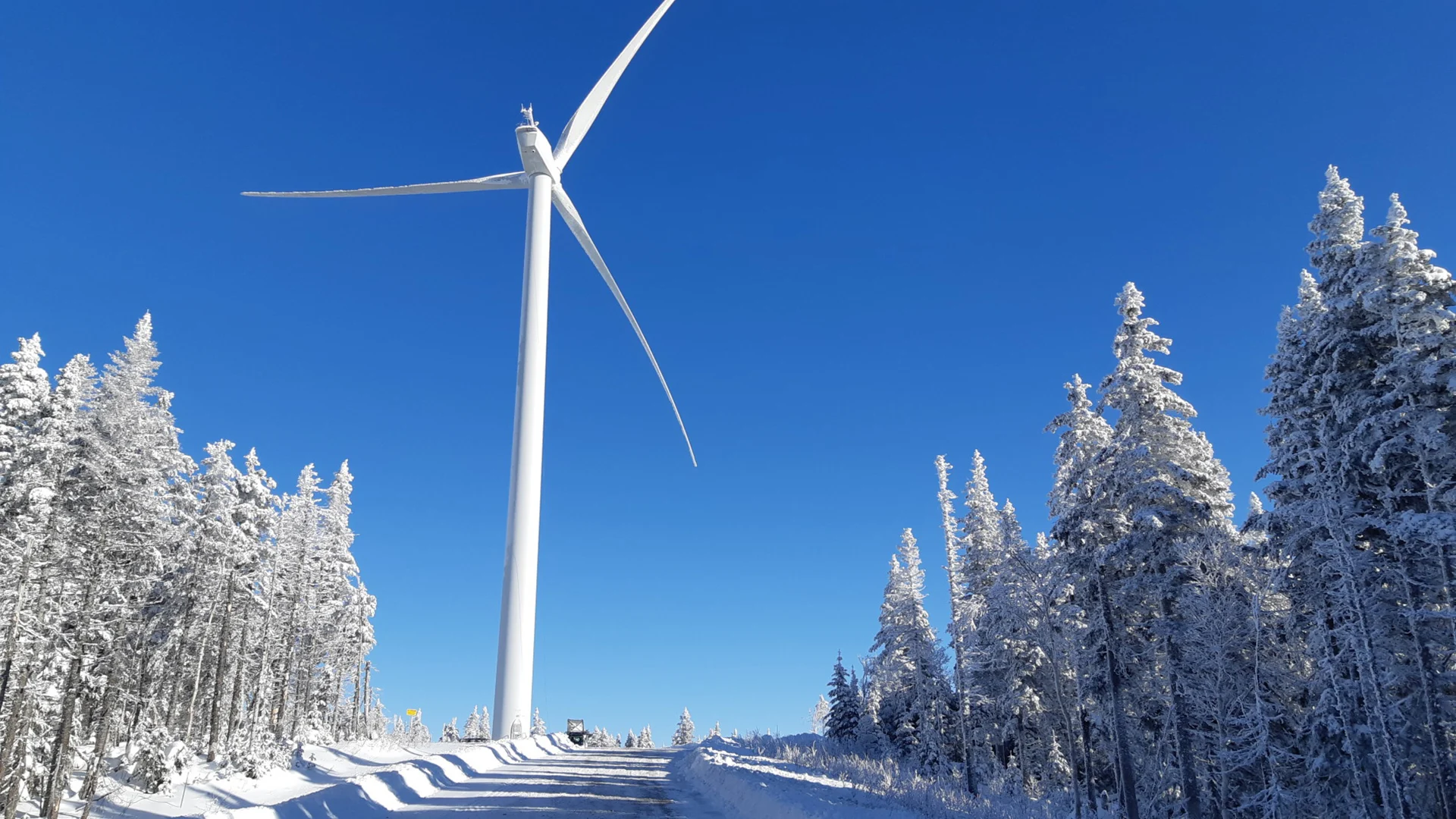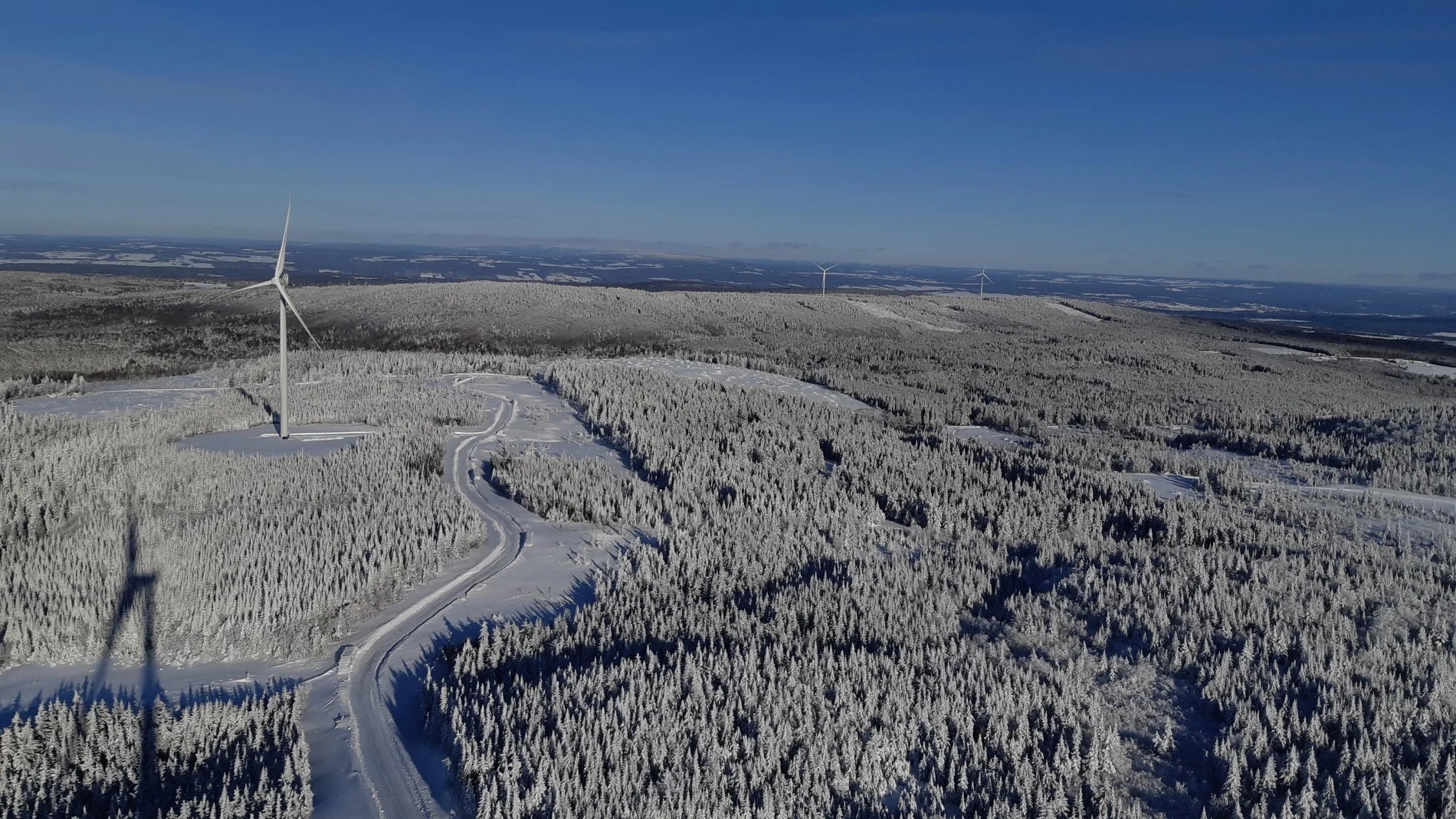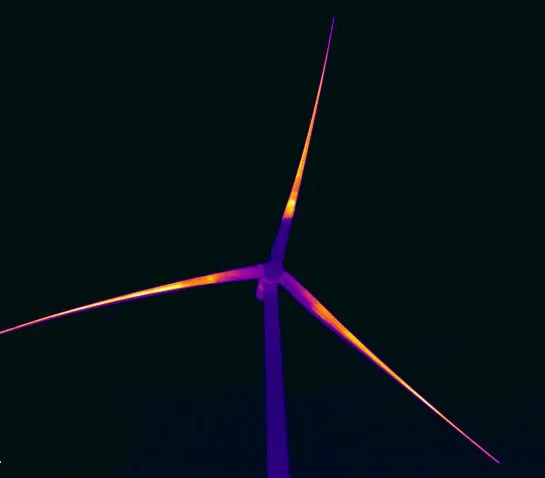
Ice can be a problem for wind turbines. Here's a Canadian company's solution
Heating wind turbines from inside the blade can prevent ice buildup and ensure energy generation at full capacity during harsh frigid conditions.
Canada sees some of its strongest winds during the winter season due to colder air temperatures and a higher air density. While this season is the perfect opportunity for wind farms, icing remains a persistent issue across North America.
Water droplets in the air can freeze on spinning turbines when temperatures are at or below 0°C. Accumulating ice makes the blade less aerodynamic, which reduces the amount of energy that can be generated and can cause damage to the turbine. Ice could also be flung hundreds of metres away from the turbines, which presents serious safety concerns.

Ice freezing on blades can damage the turbine and could be launched hundreds of metres in the air. (Borealis Wind)
"In Canada, where the industry is relatively new, we didn't know how bad icing was going to be when these wind farms were installed,” Daniela Roeper, founder and CEO of Borealis Wind, said to The Weather Network.
According to Natural Resources Canada, wind is the second most important renewable energy source in Canada and accounts for 3.5 per cent of all electricity generation. Along with solar energy, wind is one of the fastest-growing sources of energy in the country with Ontario, Quebec, and Alberta being the provincial leaders in wind power capacity.
See also: Nuclear fusion powers the Sun and stars, here's how we can generate it on Earth
Although wind turbines in Canada are certified to operate to -40°C, there are still issues with generation interruptions due to icing. To address this issue, Borealis Wind developed a patented technology that is installed inside of a blade to prevent and remove ice buildup.
“We have technicians that will go inside the blades. We mount a fan and an electric heater and run a duct system inside the blade to circulate warm air to keep the blade at 30°C on the inside. That allows us to keep the ice off on the outside even when the turbines running,” explained Roeper.
“It's easy to install as a retrofit system, which we thought was important for the Canadian market where these wind farms had been installed without heating systems. It's tough to maintain wind farms when conditions are really harsh in the winter, so we want to make sure it is a user-friendly system.”

An infrared image showing the heating system within the turbine’s blade. (Borealis Wind)
Inspired by her passion for renewable energy, Roeper founded the company shortly after graduating from university in 2016 and began installing the first systems in 2018.
“We started in 2016 and installed the first systems in 2018. We've sold over 20 systems since then and our systems are running smoothly through the winter with relatively little maintenance,” explained Roeper.
The heating system is only turned on when icing is detected and runs until the turbines return to full production and the energy used to power the heating system is drawn from the same grid that receives the energy generated by the turbines.
The cost of installing the heating system varies based on the size of the turbine and the severity of icing at the site, with a typical range of $150,000 to $300,000 per turbine, which results in a three to five-year payback on the system.
Borealis Wind manufactures its systems in Ontario and has deployed its technology to several sites across Ontario and Quebec.
“Quebec is our biggest market at the moment, so we would like to have a location in Quebec in the near future. Europe is the largest cold climate win market in the world, so eventually, it would be our goal to enter the European market,” said Roeper.
As of spring 2022, Roeper estimated that Borealis Wind had reclaimed 7,000 MW hours of wind energy production.
Watch below: Canada could be at an EV tipping point
All energy sources come with their benefits and drawbacks, and concerns about the ability of wind turbine performance in winter weather spiked after a specific high-profile incident: the harsh winter storm that impacted Texas in February 2021 that left millions without power.
According to a report by Reuters, nearly half of the wind-generating capacity in the state was wiped out during the rare Texas deep freeze.
However, a fact-check report from Reuters stated that “the use of wind turbines in Texas [did] not appear to be the primary cause of statewide power outages amid historic cold weather” and that all types of renewables contributed to just 13 per cent of the power outages.
Additionally, the state’s independent and isolated electricity grid operated by ERCOT was unable to connect to other grids during the energy generation interruptions.
Despite wind being one of the minority energy sources, this incident in Texas lead to widespread outcry and many questioning the ability of wind turbines to withstand harsh winter weather.
“With systems like Borealis Wind, we would be able to improve the reliability of wind energy. This not only provides extra energy that's clean to the grid, but it also allows wind energy to represent a larger percentage of our energy production because the reliability of the energy sources is really important,” concluded Roeper.
Thumbnail image: Borealis Wind












